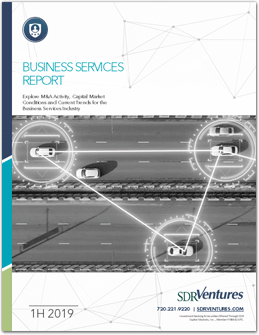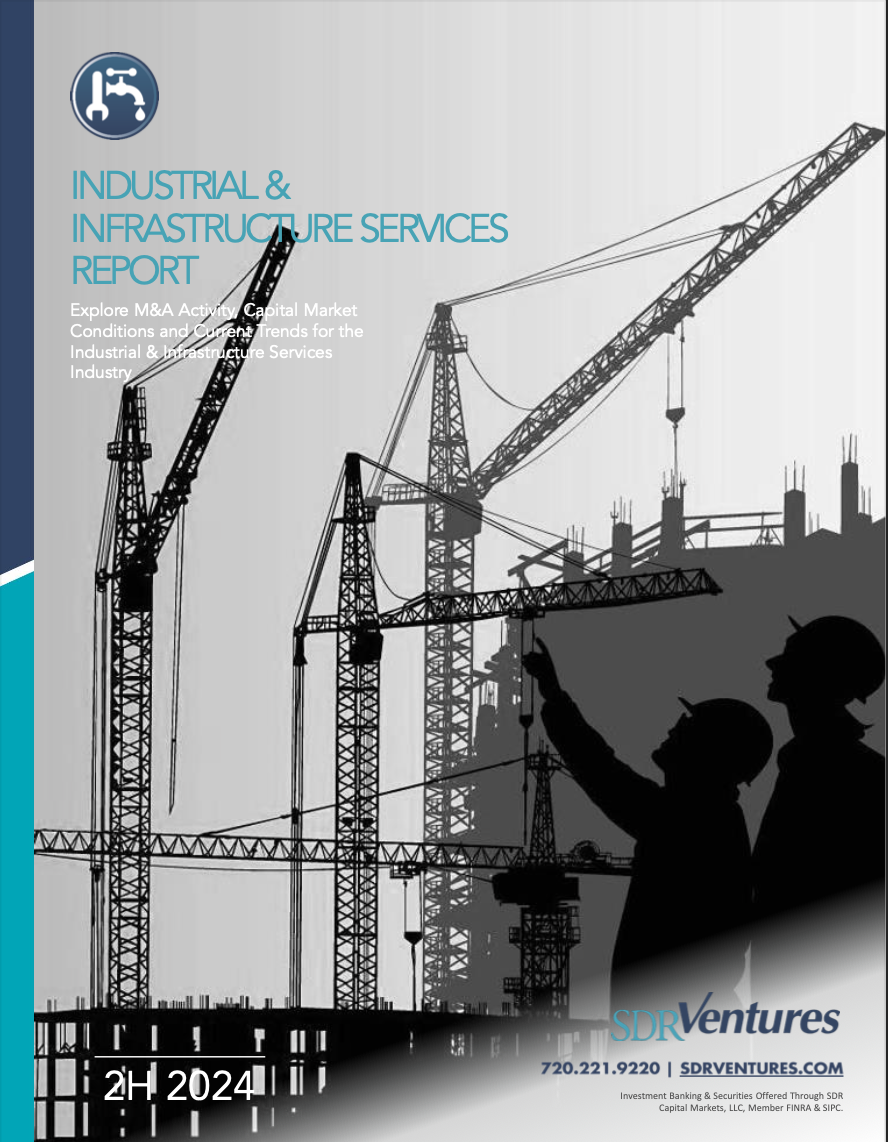2H 2024 Industrial & Infrastructure Services M&A Report

In the second half of 2024, niche infrastructure service providers—such as traffic light installers, road repair contractors, and traffic control providers—find themselves in a unique position. Fueled by a drastic need for road and infrastructure improvement and maintenance and a surge in government funding and private equity investment, these businesses are in demand. It’s estimated 43% of American roads are in poor or mediocre condition, and about 7% of American bridges (more than 42,000)...
Previous Industrial & Infrastructure Services Reports
This is a new take for us, a deep dive into those behind-the-scenes service providers every business and consumer leans on at times. Industrial and infrastructure services might seem “boring” at first. There aren’t any drones or electric airplanes involved. No next generation of efficient container ships. No quantum cloud computing. But it’s hard to think of a business, or a person, that isn’t affected by this sector. We’re talking hands on services such as plumbing and HVAC. Think janitorial and building maintenance. Electrical contracting. Restoration and cleanup after a severe storm…
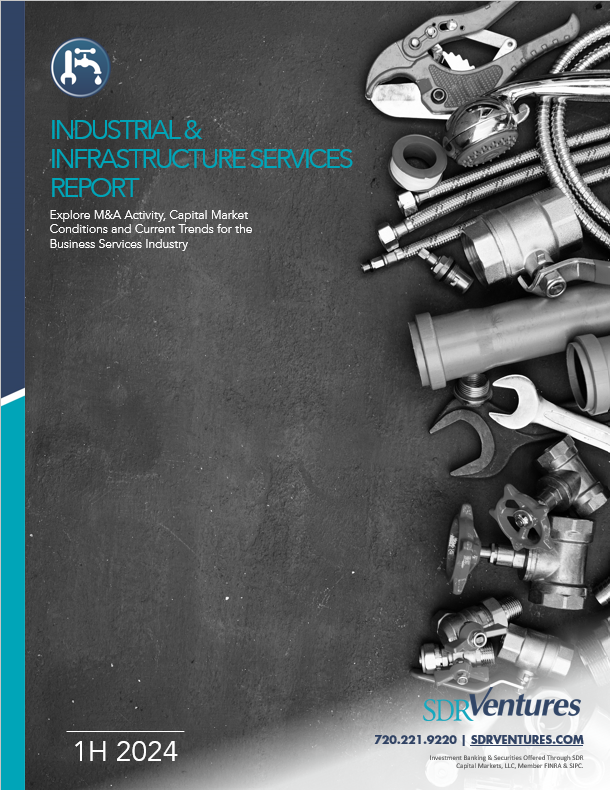
Deals in the Business Services industry, like most others, lagged in 2H23. Private equity firms largely sat on their “dry powder.” But as we peer into the sector, there do appear to be rational reasons, and reasons for optimism in the coming months. Interest rates, uncertainty, and consumer behavior appear to be top of mind. In the U.S., consumer debt climbed through 2H23, rocketing nearly $24 billion in November alone to cross the $17 trillion mark, with more than a trillion dollars of that in expensive credit card debt. Credit cards were averaging about 21% interest rates while store brand cards (think Home Depot) approached the 30% mark. Consumers have been stressed by rising inflation, the highest we’ve seen in years, and even as the rate cools, that doesn’t mean prices come back down.

The companies that build, fix, maintain, repair, and replace are seeing a boom in activity fueled by a unique combination of shifting work habits, government infrastructure investment, some rotten weather luck, and a depleted stock of available housing inventory. In business, bad things can lead to good things. The COVID-19 pandemic and supply chain related inflation led to a couple of government programs that are goosing demand for businesses that provide a variety of services in construction, infrastructure development, even the construction of a network of electric vehicle charging stations. Meanwhile, a spate of climate disasters – the $113 billion Hurricane Ian gut punch, wildfires, floods, and insane heat waves – uncorked federal disaster recovery funds to help people, businesses, and communities rebuild.
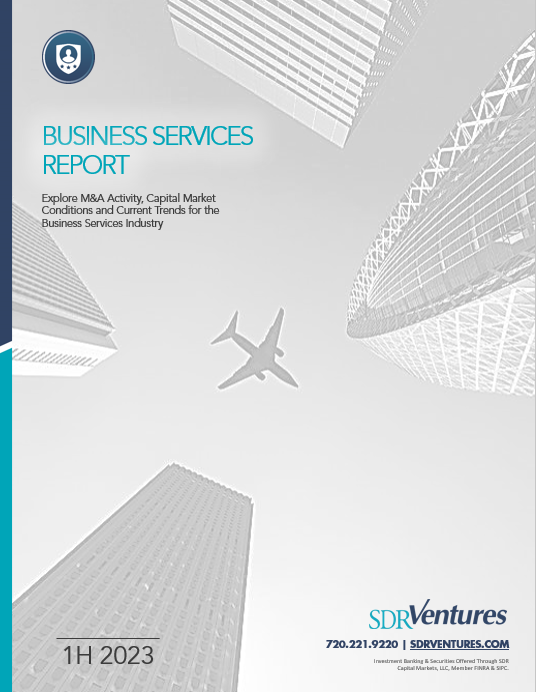
What happens when you can’t count on accounting? Boomers in the field began retiring in waves starting in 2020 while fewer young people are interested in the field, which businesses large and small depend on for managing financial operations, internal controls, and financial reporting. There’s a shortage of accountants. Job listings for these financial professionals in 2022 were up 25% from the prior period. And unlike other professionals, digitization and automation don’t appear to be poised to fill the gaps. The 2022 $80 billion Inflation Reduction Act, with funding for 87,000 new IRS agents promises to squeeze the supply even tighter.

Doesn’t matter what business you’re in. In today’s Business Services Industry, you’re probably in the tech business in some way. In 2022, business services are often about helping other industries innovate, evolve, scale, and find efficiencies through tech solutions. From getting things in the back door by managing a “supply web” instead of a fragile “supply chain” to moving things out the front door through e-commerce and fulfillment management.
As pandemic-driven e-commerce demand boomed and pandemic-sparked supply chains gasped under the strain, we’re watching how business service providers are enabling operations to overcome unforeseen obstacles, or even see them before they develop.
Once considered a buzzword, today’s digital twin technology is real, helping clients model their evolution and develop future-proof solutions that help them avoid the unexpected. A digital twin builds a complete, virtual model of a target product or service and then applies a comprehensive array of data points that allows producers to evaluate and measure every conceivable condition before sending a product out the door. And as these systems learn, improve, become faster and more powerful, a consortium of some of the biggest players has formed including Dell, Johnson Controls, Microsoft, and GE. Digital twin applications are no longer fanciful phantoms, they are real, and businesses are seeking out these services…
Industry Overview
Doesn’t matter what business you’re in. In today’s Business Services Industry, you’re probably in the tech business in some way. In 2022, business services are often about helping other industries innovate, evolve, scale, and find efficiencies through tech solutions. From getting things in the back door by managing a “supply web” instead of a fragile “supply chain” to moving things out the front door through e-commerce and fulfillment management.
As pandemic-driven e-commerce demand boomed and pandemic-sparked supply chains gasped under the strain, we’re watching how business service providers are enabling operations to overcome unforeseen obstacles, or even see them before they develop.
Once considered a buzzword, today’s digital twin technology is real, helping clients model their evolution and develop future-proof solutions that help them avoid the unexpected. A digital twin builds a complete, virtual model of a target product or service and then applies a comprehensive array of data points that allows producers to evaluate and measure every conceivable condition before sending a product out the door. And as these systems learn, improve, become faster and more powerful, a consortium of some of the biggest players has formed including Dell, Johnson Controls, Microsoft, and GE. Digital twin applications are no longer fanciful phantoms, they are real, and businesses are seeking out these services…
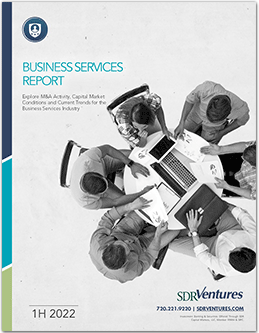
Companies large and small, backed into a corner by an ongoing labor shortage, can always raise wages to attract warm bodies. Amazon last year raised its minimum for warehouse workers to $18 an hour. Walmart moved its minimum to $12. Costco, $16. Chipotle, $18. All well above the federal minimum wage of $7.25 an hour as the national unemployment rate slid under 3.9% as 2021 ended.
But there is a labor-intensive, service business sector where workers can’t simply be hired out of thin air: skilled vocational trades. It can take, on average, six to 10 years to become a master plumber, including apprenticeships and journeyman status. Becoming a master electrician can take six to eight years. Becoming a qualified, certified trade professional takes time.
When you need a plumber, HVAC service, or an electrician, you need a plumber, HVAC service, or an electrician. There aren’t ways around these essential, high-skill services. Builders and homeowners need these services, and employers are stalking the same pool for the same skilled workers…
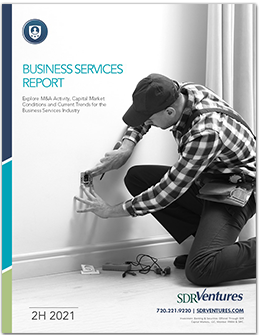
As the world awakens from its pandemic-induced slowdown (or in some sectors, shutdown) employers around the world are finally gearing back up, only to find a shortage of workers. For whatever reason – low pay, workplace dissatisfaction, fear of the virus, childcare needs, lack of flexibility, job security – workers aren’t flocking back to their old jobs. And if they do, they are being stalked by other employers dangling higher wages. Older workers forced out during the pandemic may never come back. And other workers are starting their own businesses.
All of this is creating demand and opportunity for staffing and business process outsourcing (BPO) providers in new fields, not only traditional lower-wage arenas but also for professional and technical services. The American Staffing Association reports 40% of workers being hired by staffing companies work in higher-skilled fields, including 21% in professional or managerial positions.
In April, some 4 million U.S. workers lost or quit their jobs, including 650,000 retail workers. The same month the country reported 9.3 million open jobs. In England, advertised job openings jumped 45% between March and June. Worker shortages in the U.K. are so severe business owners are asking the government to allow other Europeans to enter the country to work. Previously, opposition to allowing workers in was one of the drivers of the country’s recent break from the European Union in Brexit. In Singapore, tight border restrictions are keeping out workers who fled to rural locations during the pandemic. With so many factors in play, the traditional worker/employer relationship has been strained at best, or it may be shifting for good. As populations age, the Center for Global Development estimates there will be 95 million fewer working-age people in Europe in 2050 than in 2015…
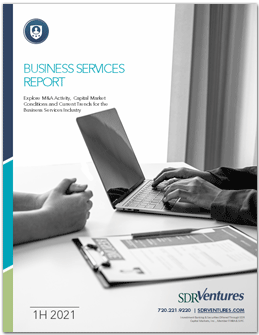
In business, good information is key to making good decisions. But when there’s too much data, too many streams of information, too many competing reports, it can be hard to see what’s real and what’s not. That’s signal to noise.
We believe in the era of COVID in the commercial services sector, there are some pretty strong signals. And a lot of noise. We see that stew of signal and noise perhaps nowhere as much as in commercial cleaning services. How much information is too much? Is the sector contracting, or is it coiling for a boom? What does it all mean for those considering a business sale, purchase, or merger?
Commercial cleaning saw plenty of changes in 2020. While “the office” has always been considered critical to business productivity and creativity, in just a few months priority shifted to working from home. Even in the earliest stages of the COVID-19 pandemic, more than 60% of Americans were sent home to work, and 80% of workers said they liked it.
As workers went home to guest-room offices, the commercial cleaning industry (also known under blurred lines as facilities management, janitorial services, or building services contractor organizations) suffered a quick shock. When offices buildings closed, cleaning contracts dried up. And it wasn’t only offices. Sports stadiums, movie theaters, music venues, event centers, and arenas closed. Large conferences canceled or went online. Hotels sat empty…
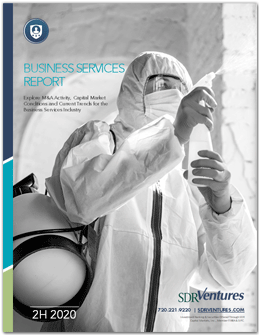
In 1H20, we’re becoming more keenly attuned to a sector emerging as an independent player in the Business Process Outsourcing (BPO) field: Customer Success.
We’re all familiar with the concept of outsourced customer service centers, whether that means call centers dealing directly with retail customers or centers that assist B2B clients when problems arise with the product. Typically, these are “problem solving” hubs. BPO allows companies to focus on core business operations and attracting new customers while training someone else to handle problems experienced by existing customers. After all, it doesn’t make sense for the 11th largest bank in the country to spend time resetting passwords when resources could be better spent growing revenue and profits.
In 2020 we’re looking at outsourced Customer Success BPO, especially as it applies to the software and subscription services sectors. The way we see it, acquiring a new customer is only the first step…
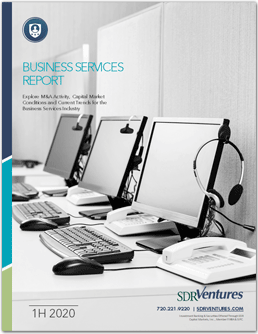
In the Business Services Industry, 2019 continued to be a good year for mergers and acquisitions in environmental services for reasons that may at first appear paradoxical but actually reflect investors’ confidence that the long-term impact of today’s lighter regulations may be creating potential bargains now and lead to pent-up demand later.
In 2019, the White House continued to slash environmental regulations that may be slowing demand for environmental mitigation in industries including oil & gas and farming. As regulations have been cut, the administration has touted massive savings for the industries – savings that presumably would have flowed into the environmental services created to help companies comply with regulations.
The scope of environmental regulations eliminated or proposed for elimination is substantial. The Sabin Center for Climate Change Law at Columbia Law School maintains a database of the administration’s proposed or enacted measures to reduce environmental regulations. By the end of 2H19, that list included 135 actions with titles such as, “Executive Order on Reducing Regulation and Controlling Regulatory Costs,” and “EPA Publishes Final Rule to Repeal and Replace Clean Power Plan.”
These are regulations that once required the services of companies that specialize in reducing or capturing emissions, coal ash retention, surface and ground water filtration or protection, to name a few.
But savvy private equity investors are seeing that if one administration can propose or enact more than 100 cuts to environmental regulations, a new administration can just as quickly replace them. There’s no guarantee the November elections will replace today’s administration, but in 2024, it’s a sure thing, no president can serve more than two terms. A 2020 flip to stricter regulations and a scramble to comply could unleash pent-up demand and quickly turn into a win for investors who made a move when the industry was out of favor, but if that doesn’t happen, a five-year return isn’t a bad bet either…
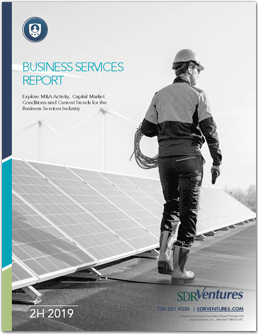
Within infrastructure spending, the Traffic Services Industry is one of the most significant areas where technological innovation is changing the game. By this point, nearly all consumers are aware of the disruptive impact that ride sharing applications have had on the Transportation Industry, the increasing hype for smart cities, and the buzz around the future of autonomous vehicles. However, most consumers are relatively unaware of the ways that technology is rapidly changing how service providers to our nation’s roads and highways deliver their work and how governing authorities are leveraging new methods of data collection to manage traffic patterns and their transportation assets.
The flow of vehicular traffic across our nation’s thoroughfares is only beginning to be understood at a granular level. For decades, government planners have worked alongside traffic engineers in an effort to answer questions around the most common routes that people take to/from work, how the congestion in one part of town impacts travel patterns in an adjacent area an hour later, and how road & highway improvements will impact macro-traffic patterns. However, only recently are new technologies allowing these questions to be addressed in more real-time situations, in more detail, and with more precise conclusions.
